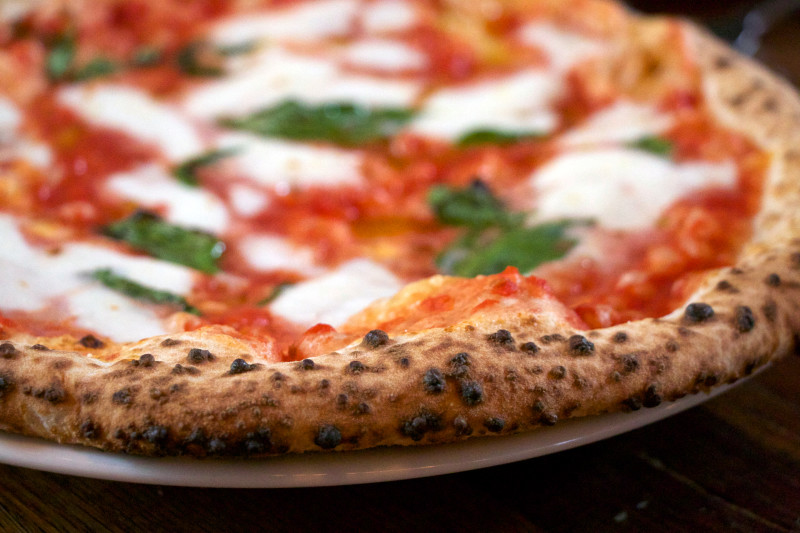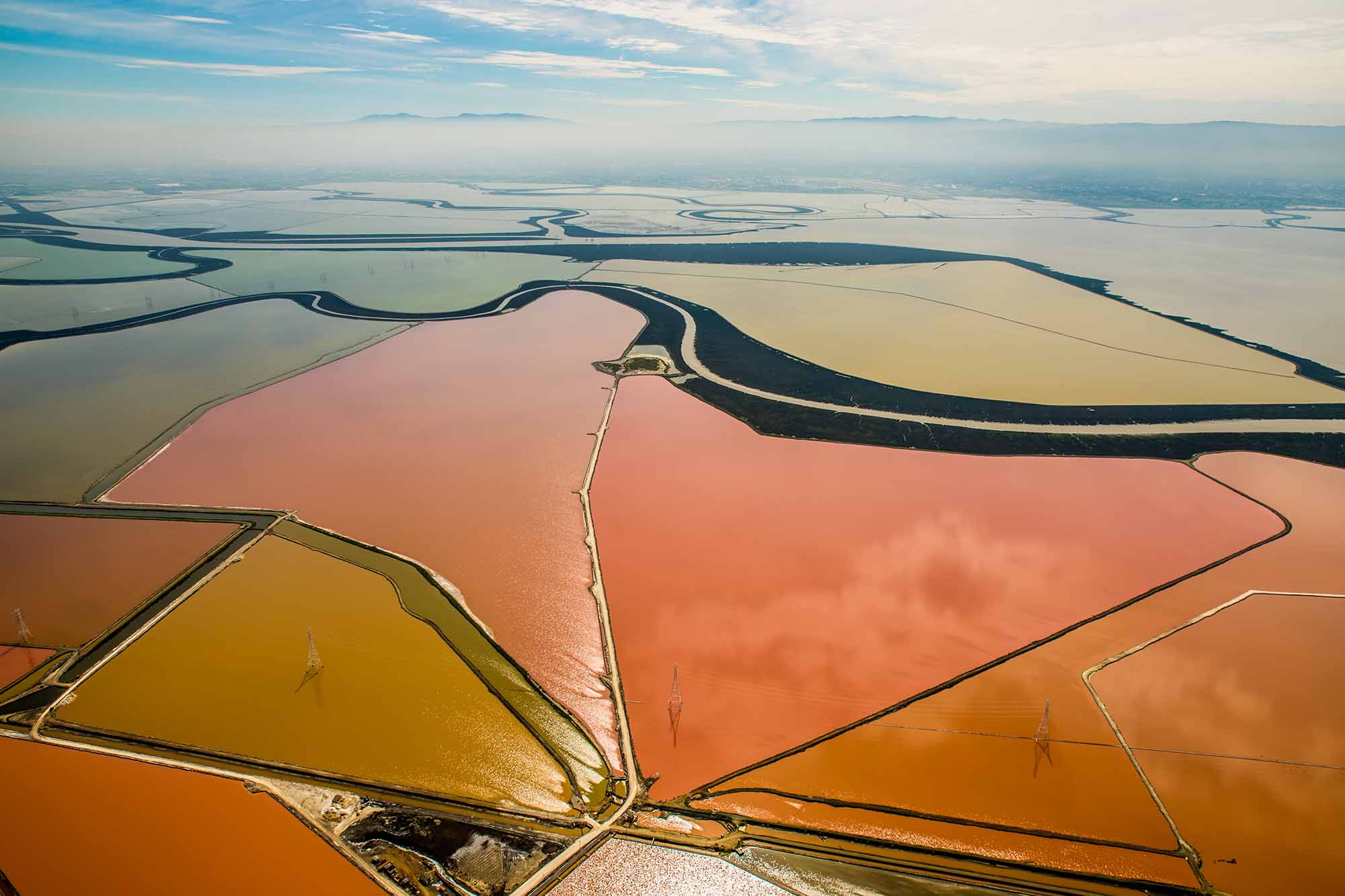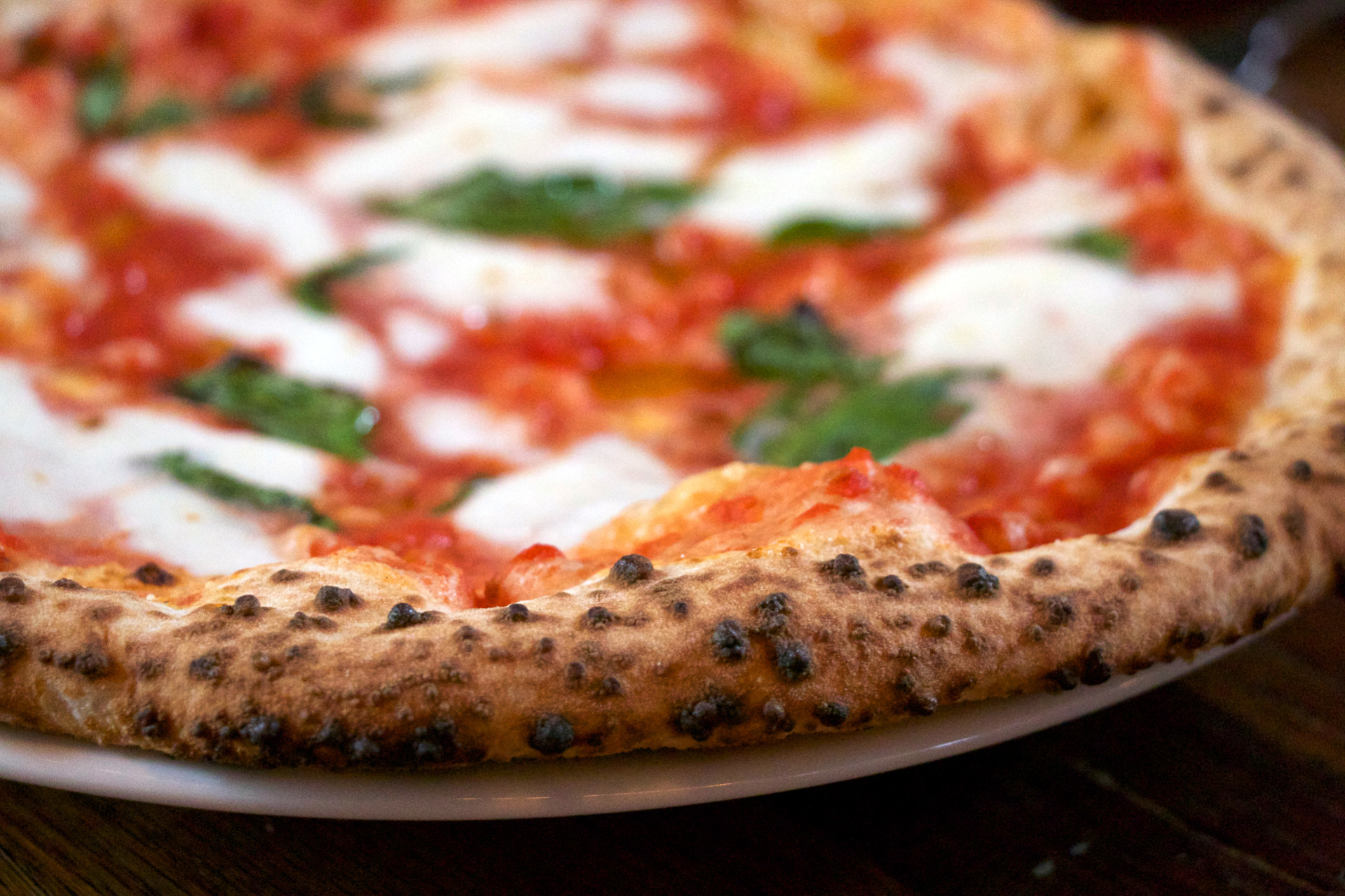How is it that there are so many variations on the theme of flour, water, yeast, tomatoes and cheese? What makes pizza “authentic?” This food with Italian origins is now an American staple, and there are more styles than you can shake a stick at, the most common in the Bay Area being traditional Italian and Californian. The line between the two is perhaps a faint one, but it isn’t arbitrary.
Italian-style pizzas, first and foremost, aren’t overloaded with ingredients, as many Cali-style pizzas tend to be. In Italy, there are no “meat-lover’s” or “everything” options, and the minimalist approach is also honored with modest proportions of sauce and cheese. The sauce is most often made with preserved tomatoes, not tinned paste, and the cheese is almost always fresh mozzarella, rather than the drier block stuff you see vacuum-sealed next to the cheddar in the cheese aisle. And you will rarely, if ever, find fruit on an Italian pizza, unless it is a dessert.
But the crust is the heart of the matter, the biggest distinction between the two styles. California-style pizza crust is often more akin to bread. Whether soft or crisp, it tends toward thickness, and serves more as a vehicle for supporting lots of ingredients, holding up to the weight and soaking up any juices. Italian styles of crust, of which there are several, all skew toward some combination of thin and chewy, and these are always cooked at high heat, the best versions ending up with blistered edges, an al dente texture, and just enough structure to support light toppings. It’s not important that pieces might be picked up as slices; in fact, forks are allowed, as are the customary triangular slices, which tend to droop a tiny bit at the pointed ends.
This guide covers 10 of the best destinations for Italian-style pizza in Berkeley and Oakland, specifically reviewing each restaurant’s margherita— the classic recipe of tomato, sauce, mozzarella and basil, named for Queen Margherita of Savoy. Let me know in the comments section if I’ve missed your favorite.


